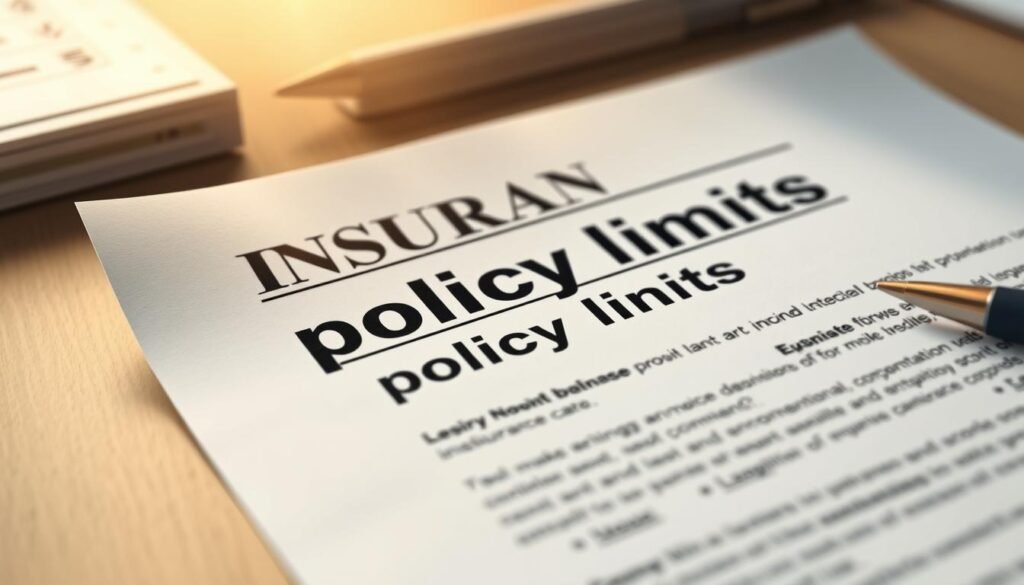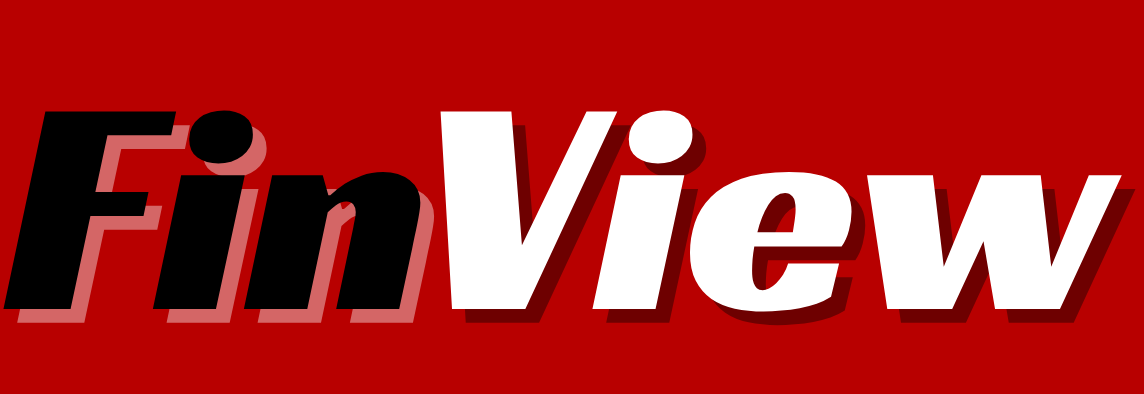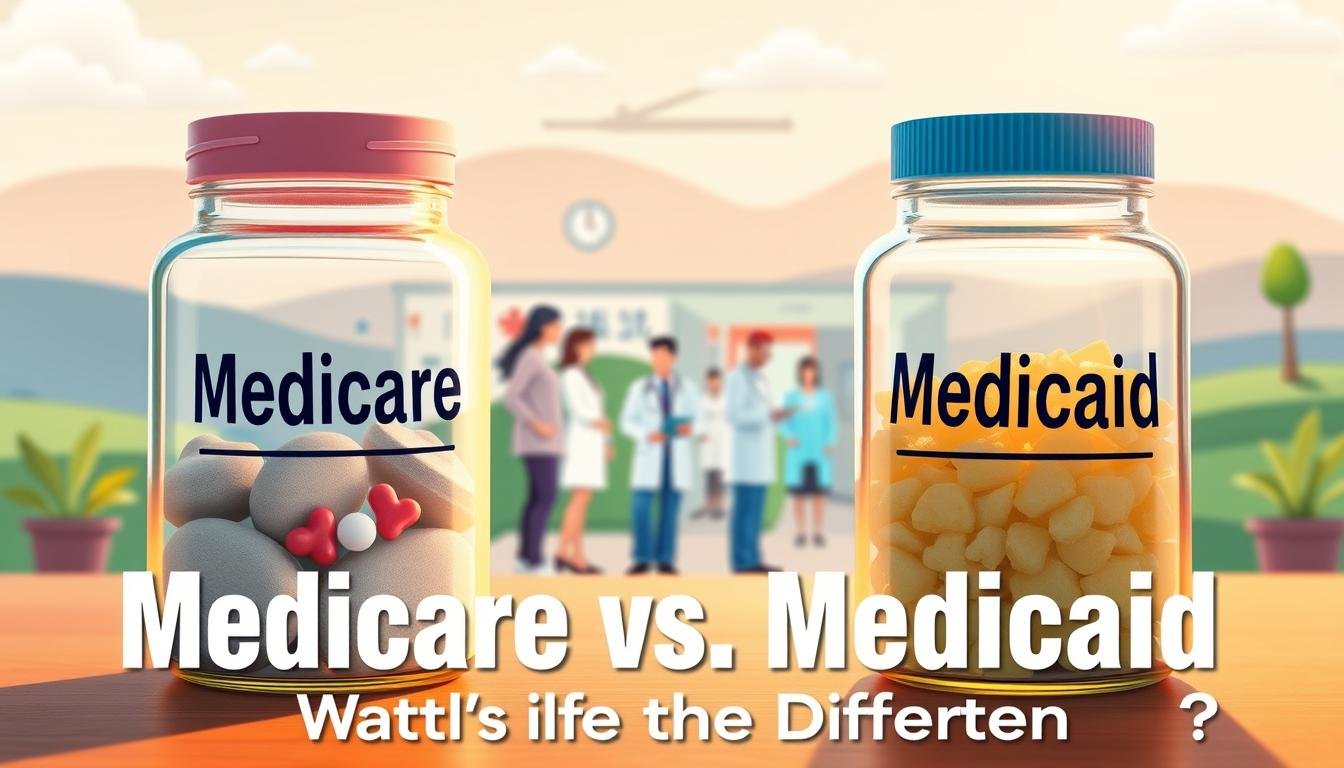Did you know that over 90% of U.S. households have some form of insurance coverage? Despite this high percentage, many Americans struggle with understanding insurance and the insurance policy process. This section aims to demystify how insurance operates by breaking down its fundamental components: premiums, deductibles, and claims.
Insurance serves as a financial safety net, protecting individuals and their assets from various risks. To maintain this protection, policyholders pay premiums—regular payments to insurance companies. When a covered event occurs, the insured parties face deductible payments before the insurance covers additional costs. Lastly, if damages exceed the deductible, policyholders file claims to request compensation from their insurer.
Key Takeaways
- Insurance coverage serves as a financial safeguard against risks and unexpected events.
- Premiums are the regular payments made to keep an insurance policy active.
- Deductibles are out-of-pocket expenses that policyholders pay before an insurer covers the remaining costs.
- Claims are formal requests made by policyholders to their insurance companies for compensation.
- Understanding the insurance policy process can help you make informed decisions and be prepared in case of an emergency.
What is Insurance and Why Do You Need It?
Insurance constitutes a cornerstone in the realm of risk management, ensuring financial security. It enables individuals and corporations to identify and mitigate risks proactively. This involves the acquisition of insurance policies, which act as a protective barrier against unforeseen financial losses.
The fundamental objective of insurance is to confer financial security and tranquility. For example, homeowner’s insurance is indispensable in shielding against damages caused by severe weather, such as high winds, tornadoes, and hail, prevalent in areas like Colorado.
Grasping the insurance essentials is imperative for financial planning. Insurance policies encompass a wide range of protections, from property damage to liability. This makes them indispensable in financial planning. Adequate insurance coverage ensures that individuals and businesses remain financially afloat in the face of unexpected events.
In conclusion, insurance’s core value lies in its capacity to systematize risk management. It transforms potentially catastrophic events into manageable risks, providing a vital layer of financial protection. Engaging with insurance experts to assess coverage and deductibles, during critical periods, is essential for ensuring preparedness and security.
How Insurance Premiums are Calculated
Grasping the intricacies of insurance premium calculation is essential for prudent financial management. The determination of premium costs is influenced by several critical factors, which insurance entities meticulously assess. These elements serve as the foundation for evaluating the risk profile of the policyholder, guiding the insurers in setting the appropriate premium rates.
The selection of coverage type is a primary determinant. The distinct risk profiles inherent in health, auto, and home insurance categories directly influence the base premium costs. Historical claims data also significantly impacts the premium calculation. Repeated or high-value claims are indicative of elevated risk, prompting insurers to adjust premiums upward.
Credit score emerges as a significant factor in premium determination. A commendable credit score is a testament to financial prudence, positively influencing the insurance calculation. In contrast, a subpar credit score is often associated with higher premium costs, reflecting a perceived increased risk.
Strategies for mitigating premium expenses are available to policyholders. Maintaining a pristine claims history, consolidating various insurance policies, and selecting higher deductibles are proven methods to curtail premium outlays.
| Factor | Impact on Premium Costs | Strategy for Saving |
|---|---|---|
| Type of Coverage | Base premiums vary based on risk profiles | Choose coverage suited to your actual needs |
| Historical Claims | Higher frequency or value leads to higher premiums | Maintain a clean claims history |
| Credit Score | Lower score can increase premiums | Improve and maintain a good credit score |
| Deductibles | Lower deductibles lead to higher premiums | Opt for higher deductibles |
| Bundling Policies | Often results in discounted rates | Bundle multiple policies |
By comprehending these elements and implementing practical strategies, policyholders can adeptly manage their premium expenditures, leading to substantial savings. This proactive approach to insurance selection yields long-term financial advantages, underscoring the importance of informed decision-making.
The Purpose of Deductibles in Insurance Policies

Insurance deductibles are a cornerstone of insurance policies, serving to distribute financial risk between the insurer and the insured. By mandating policyholders to contribute a portion of the loss initially, deductibles aim to diminish the occurrence of minor claims. This, in turn, stabilizes insurance premiums over the long term.
Deductibles function differently across various insurance categories, such as auto, health, and home. In auto insurance, for example, deductibles pertain to collision and comprehsensive coverage, directly affecting the amount a policyholder must pay before insurance coverage commences. Analogously, health insurance deductibles dictate the threshold beyond which medical expenses are covered by insurance.
When choosing deductibles, it is imperative to consider one’s financial standing and risk appetite. Opting for higher deductibles typically results in lower monthly premiums but incurs greater out-of-pocket expenses during a claim. On the contrary, selecting lower deductibles escalates premiums but mitigates immediate financial strain in the event of a loss.
Optimal policy management entails selecting deductibles that harmonize affordability with peace of mind. It is essential to grasp one’s risk profile and financial capacity to make decisions that resonate with both budgetary constraints and insurance requirements.
Through a thorough evaluation of these elements, policyholders can maximize the advantages of their insurance coverage while effectively managing costs.
Understanding the Claims Process
The intricacies of the *insurance claims process* may initially seem daunting. Yet, by familiarizing oneself with the sequential steps involved, the complexity can be significantly diminished. Upon the occurrence of an incident, the imperative first action is to promptly inform your insurance provider. This is a critical step, as insurers frequently mandate immediate notification to activate the claim process.
Subsequently, the submission of requisite documentation is obligatory. This encompasses a thorough recount of the incident, photographic evidence where applicable, and supplementary documents such as medical reports or repair estimates. The provision of accurate and exhaustive documentation is indispensable for a seamless *insurance claims process*.
It is equally vital to comprehend the prevalent claim denial reasons. Claims may be rejected for a variety of reasons, including:
- Non-covered incidents
- Incomplete or inaccurate information
- Failure to meet policy conditions
- Suspicion of fraud or foul play
To circumvent these common pitfalls, it is imperative to ensure the accuracy and comprehensiveness of all provided information. A meticulous review of the details prior to submission can significantly reduce the likelihood of denial due to errors or omissions.
In conclusion, proficiency in the *insurance claims process* hinges on timely notification, meticulous documentation, and an understanding of the reasons for claim denials. Adherence to these guidelines can substantially enhance the likelihood of a claim’s successful approval.
Types of Insurance Policies Available
Insurance policies act as indispensable shields for individuals and their assets. Each category is tailored to address distinct risks and liabilities. It is imperative to grasp the unique attributes of *health insurance*, *auto insurance*, and *homeowners insurance* when making a selection.
Health Insurance: This form of insurance mitigates the financial burden of medical expenses, encompassing doctor visits, hospital stays, surgeries, and prescription medications. The spectrum of plans is broad, ranging from individual to family and group coverage. Critical factors to evaluate include premium costs, deductibles, co-payments, and out-of-pocket limits.
- Coverage Options: Preventive care, emergency services, hospitalization, maternity and newborn care, mental health services.
- Essential Benefits: Vital treatments, vaccinations, screenings, and wellness checks are typically included.
Auto Insurance: Imperative for any vehicle owner, *auto insurance* offers financial protection against accidents, theft, and other vehicular damages. Policies can be tailored to meet individual coverage needs.
- Coverage Options: Liability coverage, collision coverage, personal injury protection (PIP), uninsured/underinsured motorist coverage.
- Essential Benefits: Covers medical expenses, repairs, legal fees, and replacement costs.
Homeowners Insurance: It safeguards one’s home and possessions against various perils such as fire, theft, and natural disasters. This policy is indispensable for homeowners to protect their most significant investment.
- Coverage Options: Dwelling coverage, personal property coverage, liability protection, additional living expenses (ALE) coverage, flood, and earthquake endorsements.
- Essential Benefits: Rebuilding costs, furniture and appliance replacement, personal liability protection.
In the selection of these *types of insurance*, it is vital to comprehend the specific coverage options and essential benefits. A detailed evaluation of policy specifics ensures that individuals and families acquire the necessary protection tailored to their unique circumstances.
The Importance of Policy Limits

Policy limits are a critical component of any insurance policy, as they determine the maximum amount the insurance company will pay in the event of a claim. Understanding insurance coverage limits is essential for assessing the adequacy of protection against financial losses. Policyholders must carefully consider their insurance coverage limits to avoid underinsurance, which can leave gaps in protection.
There are different types of policy limits, including minimum coverage and maximum coverage limits. Minimum coverage refers to the least amount of insurance coverage mandated by state laws or required by lenders, while maximum coverage represents the highest amount the insurer is obligated to pay under the policy. Selecting appropriate policy limits involves balancing affordability with adequate protection to ensure financial security.
To illustrate the significance of policy limits, consider the following comparison:
| Coverage Type | Minimum Coverage | Maximum Coverage |
|---|---|---|
| Auto Insurance | $25,000 (Bodily Injury per person) | $500,000 (Bodily Injury per accident) |
| Homeowners Insurance | $100,000 (Liability) | $1,000,000 (Liability) |
| Health Insurance | $50,000 (Annual limit) | $2,000,000 (Annual limit) |
As demonstrated in the table, choosing the right insurance coverage limits is of utmost importance. We recommend conducting a thorough assessment of your personal or business needs to ensure your policy limits provide sufficient protection. While minimum coverage might reduce premiums, it is often inadequate for covering significant claims. Consulting with an insurance advisor can help you tailor your coverage to best fit your unique requirements and risk exposure.
The Role of Underwriting in Insurance
In the realm of the insurance sector, underwriting emerges as a critical function, influencing both the insurer and the insured. This process entails the evaluation of an applicant’s risk profile to ascertain the provision of coverage and its associated cost. Underwriters engage in a meticulous analysis, scrutinizing aspects such as the applicant’s health, lifestyle, and financial background. This evaluation enables underwriters to customize insurance policy terms with precision.
The core responsibility within insurance underwriting revolves around the determination of premiums. Underwriters meticulously compute premiums based on the probability of a claim occurrence. The objective is to strike a balance between premiums that are sufficiently high to deter unwarranted applications and those that are excessively low, potentially leading to substantial financial losses for the insurer. This calculation process leverages statistical models, historical claim data, and prevailing market trends.
An examination of the underwriter’s assessment criteria elucidates their role:
- Health: Medical history, current health conditions, and family health history.
- Lifestyle: Habits such as smoking, alcohol consumption, and recreational activities.
- Financial History: Credit score, financial stability, and previous claims history.
By thoroughly reviewing these criteria, underwriters are able to make well-informed decisions. This balance ensures that the insurer’s risk management needs are met while providing the policyholder with coverage that is both fair and affordable. In summary, the underwriting process and the underwriters’ role are fundamental to the insurance industry. They guide premium determination and foster financial stability for all parties involved.
Common Insurance Terms You Should Know
Embarking on the journey through the realm of insurance necessitates a thorough comprehension of insurance terms. Our objective is to elucidate critical concepts, aiming to refine your understanding insurance language with utmost clarity and precision. Below, we present an exhaustive overview of fundamental insurance vocabulary, designed to facilitate your exploration into the complexities of policy discussions.
Grasping and recognizing essential insurance terms confers substantial benefits when engaging in the selection and management of policies. Let us explore some of the most frequently encountered terms:
- Premium: The periodic payment made by the insured to the insurer for risk coverage. A thorough understanding insurance language regarding premiums is vital for effective budgeting of policy expenses.
- Deductible: The initial amount of loss that the insured must bear before the insurance coverage commences. This knowledge is indispensable for making informed decisions between various policy options.
- Claim: A formal request to an insurance company for compensation based on the policy’s terms. Successful claims adjust the coverage in the event of an incident.
- Policy Limit: The maximum amount the insurer will pay for a covered loss. Understanding this term ensures you are adequately insured.
- Exclusion: Specific conditions or circumstances not covered by the policy. Awareness of exclusions prevents unexpected surprises.
- Beneficiary: The individual or entity entitled to receive the payout from the policy under certain conditions, significantly relevant in life and health insurance.
- Endorsement: Additional coverage or policy modifications that alter the standard policy terms, often increasing or decreasing coverage.
- Underwriting: The process by which insurers assess the risk of insuring a home, car, or person to determine the premium to be charged.
An informed policy decision and a deepened understanding of insurance vocabulary empower consumers. Mastery of this insurance vocabulary is not merely beneficial; it is indispensable for securing the most advantageous coverage options available.
Tips for Choosing the Right Insurance Provider
The selection of an appropriate insurance provider is critical for securing dependable coverage and service. Initiating the process involves a comparative analysis of various companies’ offerings and pricing structures. Utilizing resources such as FinanceBuzz can facilitate an evaluation of which insurer aligns most closely with your requirements. It is imperative to scrutinize both the premium costs and the scope of coverage provided.
Engaging with insurance company reviews is a fundamental step in the decision-making process. Seek out customer testimonials regarding claims satisfaction and service quality. For instance, Nationwide’s ranking of 4th in J.D. Power claims satisfaction is noteworthy, indicating a high standard of customer service. This comparative analysis enables the identification of insurers that consistently fulfill customer expectations.
Further consideration should be given to the discounts and programs offered by each insurer. Nationwide and Progressive, for example, provide a range of discounts, including loyalty and safe driver incentives. They also offer usage-based insurance programs, which could result in cost savings based on driving behavior. When evaluating insurance options, it is essential to account for these possible savings to identify the most economical policy.






